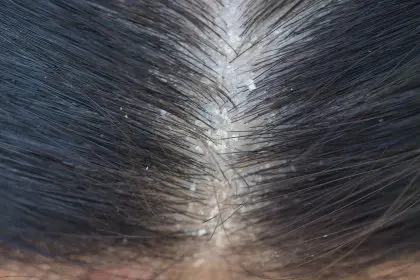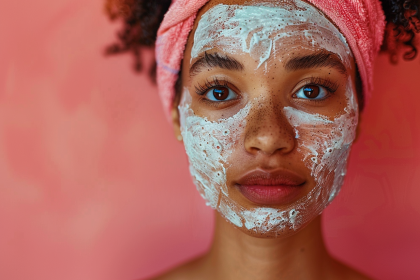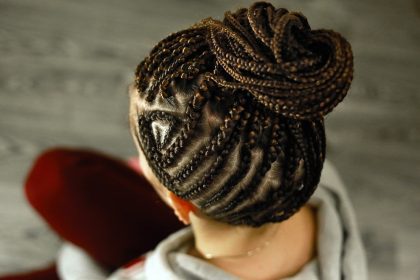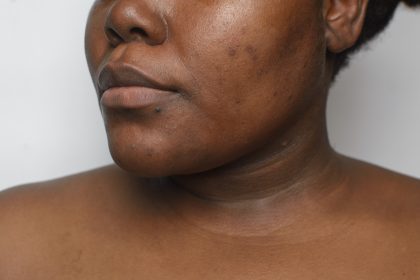The appearance of gray strands in the mirror often signals the passage of time, a visual reminder of aging that many accept as inevitable. However, recent scientific discoveries have revealed a more complex picture: emotional stress plays a far more significant role in premature graying than previously understood. This connection between mental well-being and hair pigmentation offers new insights into preserving natural hair color longer.
While genetics and aging certainly contribute to graying, mounting evidence suggests that managing stress effectively could potentially delay this visible sign of aging. Understanding the biological mechanisms behind this connection provides valuable knowledge for anyone concerned about premature graying.
The biological foundation of hair color
Hair derives its color from specialized cells called melanocytes located within hair follicles. These remarkable cells produce melanin, the pigment responsible for the diverse spectrum of human hair colors from platinum blonde to deep black. Each melanocyte draws from a finite reserve of stem cells that renew and sustain pigmentation throughout life.
As years pass, these reserves naturally diminish, leading to decreased melanin production. When melanin levels drop, hair loses its pigmentation and appears gray or white. This gradual process typically begins in the 30s or 40s, though exact timing varies significantly based on genetic factors.
What makes recent findings particularly intriguing is how stress disrupts this natural timeline. The biological environment surrounding melanocyte stem cells becomes compromised during periods of high stress, accelerating their depletion and triggering premature graying years or even decades earlier than would otherwise occur.
How stress transforms hair from pigmented to gray
When the body experiences stress, it activates the fight-or-flight response, releasing hormones like cortisol and norepinephrine into the bloodstream. While this response serves an important protective function in short-term dangerous situations, chronic stress leads to prolonged exposure to these powerful chemicals, damaging various bodily systems.
Research has identified three primary mechanisms through which stress accelerates the graying process:
First, stress increases oxidative stress throughout the body, producing excess free radicals – unstable molecules that damage cellular structures including the delicate melanocytes responsible for hair pigmentation. This molecular damage accumulates over time, gradually impairing melanin production.
Second, chronic stress activates the sympathetic nervous system, which directly connects to hair follicles. This activation forces melanocyte stem cells to differentiate prematurely, exhausting the finite reservoir of cells capable of producing pigment. Once depleted, these stem cells cannot be regenerated.
Third, ongoing stress triggers increased inflammation throughout the body, including the scalp. This inflammatory environment creates hostile conditions for melanocytes, further compromising their function and survival.
Emotional triggers that affect hair pigmentation
Certain life circumstances create particularly intense stress responses that can rapidly accelerate graying. Major life transitions such as divorce, job loss, or relocation often coincide with noticeable changes in hair pigmentation. Grief and bereavement represent especially powerful emotional stressors that frequently trigger visible graying within relatively short timeframes.
Career pressure also plays a significant role, with high-stakes professions showing higher rates of premature graying. Those working in demanding fields with significant responsibility, tight deadlines, or life-or-death decisions face chronic stress that can manifest physically through accelerated graying.
Mental health conditions such as anxiety disorders and depression create persistent internal stress that, when left unaddressed, contributes to premature graying. The constant production of stress hormones in these conditions creates a particularly challenging environment for melanocyte health and function.
Protecting hair color through stress management
While aging inevitably affects hair pigmentation, effectively managing stress can potentially reduce its impact and preserve natural color longer. Several science-backed approaches offer protection for hair pigmentation:
Regular mindfulness and meditation practices demonstrate measurable effects on stress hormone levels, particularly cortisol. Studies show that consistent meditation can reduce cortisol production by up to 20%, creating a more favorable biological environment for melanocytes.
Physical activity serves as a powerful stress reducer, with even moderate exercise significantly decreasing stress hormone levels while improving circulation to hair follicles. Activities that combine movement with mindfulness, such as yoga or tai chi, provide dual benefits for hair health.
Dietary choices impact both stress and hair pigmentation directly. Foods rich in antioxidants – such as berries, dark leafy greens, and omega-3 fatty acids – help neutralize the free radicals that damage melanocytes. B vitamins, particularly B12, appear especially important for maintaining hair pigmentation.
Sleep quality dramatically affects stress hormone regulation, with consistent sleep patterns helping stabilize cortisol levels. Poor sleep increases oxidative stress throughout the body, accelerating the graying process. Establishing consistent sleep routines represents one of the most effective interventions for preserving natural hair color.
Professional mental health support through therapy, counseling, or support groups provides essential tools for managing emotional stress effectively. Addressing underlying anxiety, developing healthy coping mechanisms, and processing traumatic experiences all contribute to creating an internal environment that supports melanocyte health.
Natural aging versus stress-induced graying
An important distinction exists between natural age-related graying and stress-induced premature graying. Natural graying occurs gradually as melanocyte stem cell reserves deplete over decades. This process typically follows a predictable pattern, beginning at the temples and progressing throughout the hairline.
Stress-induced graying often appears more suddenly and may occur in patches or affect the entire head simultaneously. This accelerated timeline represents the most visible indicator that stress, rather than natural aging alone, drives the process.
Once melanocyte stem cells become depleted due to age or stress, the graying process becomes largely irreversible. However, addressing stress early and maintaining consistent stress management practices may help preserve natural hair color longer by protecting the remaining melanocyte reserves from premature exhaustion.
The social dimensions of premature graying
Gray hair carries significant social implications that vary widely across cultures and communities. Some view it as a distinguished mark of wisdom and experience, while others perceive it as an unwelcome reminder of aging. These contrasting perspectives create complex emotional responses to graying, particularly when it occurs prematurely.
For many experiencing stress-induced premature graying, the visible change can affect self-perception and confidence. Understanding the connection between stress and graying helps foster a more compassionate relationship with this natural process while providing actionable steps to address underlying causes.
The beauty industry offers numerous solutions for covering gray hair, from permanent dyes to temporary concealers. While these products address the cosmetic aspect, they do not address the underlying stress factors that contribute to the condition. A comprehensive approach addresses both the visible signs and the root causes of premature graying.
A mind-body connection revealed through hair
Stress-induced gray hair serves as a visible reminder of the profound connection between mental and physical health. The same stress that affects mood, sleep, and cognitive function also alters hair pigmentation, creating a visible marker of internal well-being.
By addressing stress holistically, individuals potentially slow the progression of gray hair while simultaneously improving overall health. Taking proactive steps to manage emotional well-being leads to benefits that extend far beyond hair color, affecting everything from immune function to cardiovascular health.
While the transition to gray hair may be inevitable eventually, understanding its relationship with stress empowers individuals to take greater control of both their emotional well-being and physical appearance. Whether choosing to embrace gray hair as a natural part of aging or working to preserve natural color longer, addressing underlying stress remains key to both physical and emotional health throughout life.
The science of stress-induced graying continues to evolve, offering increasingly sophisticated understanding of how mental states affect physical appearance. This knowledge bridge between psychology and biology opens new possibilities for integrated approaches to wellness that address both the visible signs of aging and the internal factors that accelerate them.













